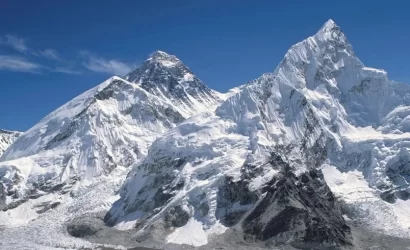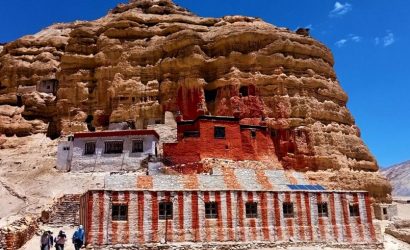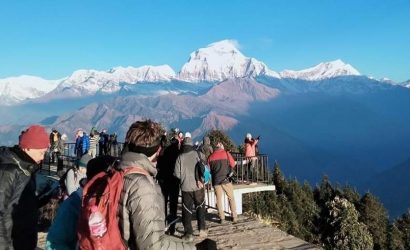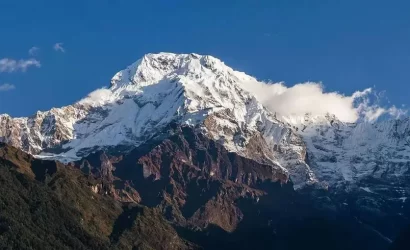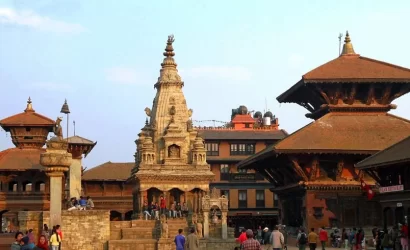Everest Gokyo Cho La Pass Trek is an outstanding trek offering the spectacular views of the Himalayas. While Trekking in Nepal this particular circuit leads the trekkers to the source of the splendid Dudh Koshi River, magnificent Gokyo Valley, the great Ngozumpa Glacier, the famous Cho La Pass, and the popular view of the Gokyo Ri and Kala Patthar along with the Everest Base Camp and entirely through to the popular landmarks of the Everest region. The entire area is blessed with abundance of natural beauty, the soaring mountain ranges, colorful monasteries, friendly Sherpas and 360 degree panoramic view of the sky scraped mountain ranges including four above 8000 thousand meter massifs which includes Cho-oyu, Everest, Lhotse and Makalu.
Overview
If any trekking route in Nepal pushes the envelope in terms of adventure and difficulty, it’s the Everest Base Camp Cho La Pass Gokyo Trek. It forces the hikers to discover numerous secret locations, take in the breathtaking scenery, and get the ideal picture of Mount Everest.
Although the trek is a little more challenging than others, the Nepal Eco Adventure will take you on an interesting adventure. From Lukla onwards, your journey will be made easier and more enjoyable by the presence of a porter and trekking guide.
Due to caste migration over the years, you can even come across Brahmin, Chhetri, Sherpa, and Rai people. The majority of trekkers make a halt at Tengboche monastery, one of the most important tourist destinations in Khumbu.
At a height of 5,364 metres, Everest Base Camp is located to the south of Mount Everest. From Kathmandu, it is roughly 144 kilometres away, and the trek actually begins in Lukla. There are other towns along the trail that leads from this small Sherpa town, such as Namche Bazaar and Dingboche.
Itinerary
Includes
- Free International and domestic airport pick up and drop off by private car/Jeep/ Hiace.
- Accommodation on B/B plan in Kathmandu for 3-night in a 3-star hotel.
- Meals on a full-board basis (Breakfast, Lunch, and Dinner/ the main course) during the trek.
- Experienced, government-licensed, English-speaking trekking guides/Sherpas.
- All guide salary, food, drinks, accommodation, transport, and insurance.
- All necessary papers, including Everest National Park fee and trekking permit.
- Tea House accommodation during the trek.
- Airfare from Kathmandu – Lukla - Kathmandu, including airport departure tax in both Kathmandu and Lukla airport
- Supplementary snacks: energy bars, crackers, cookies, etc.
- Farewell Dinner at a Nepalese restaurant with traditional music and dance
- An oximeter to measure your oxygen and Pulse level during the trek in the mountains is beneficial for all the trekkers to be aware of the high altitude sickness.
- Compressive first aid box (Guide will carry it throughout the trek).
- Emergency rescue operation assistance will be arranged in case of complex health conditions (funded by your Travel Insurance)
- All government, Local taxes/VAT, and official Expenses
Excludes
- Nepal entry visa fees (USD 30 for a day tourist visa can be obtained at the Airport of Kathmandu on arrival!)
- Single supplement $200 extra.
- Extra accommodation and meals behind schedule the schedules of this trekking trip program
- All kinds of beverages, including alcoholic and nonalcoholic, as well as hot and cold drinks
- Additional costs are out of management control due to the landscape, weather conditions, illness, changes in government policies, strikes, physical conditions, etc.
- Surplus luggage charges for domestic airports (Max weight is 15-17 kg per person).
- Personal expenses such as snacks, laundry, telephone, WIFI, hot shower, etc., at tea houses on a trek.
- Travel insurance has to cover emergency rescue evacuation from high altitudes up to 5000 m.
- Personal trekking equipment for this trek.
- Tipping and Gratitude to the guides and staff (Recommended by Nepali culture).
- Any other expenses that are not mentioned in the Price Inclusive section of this trek.

